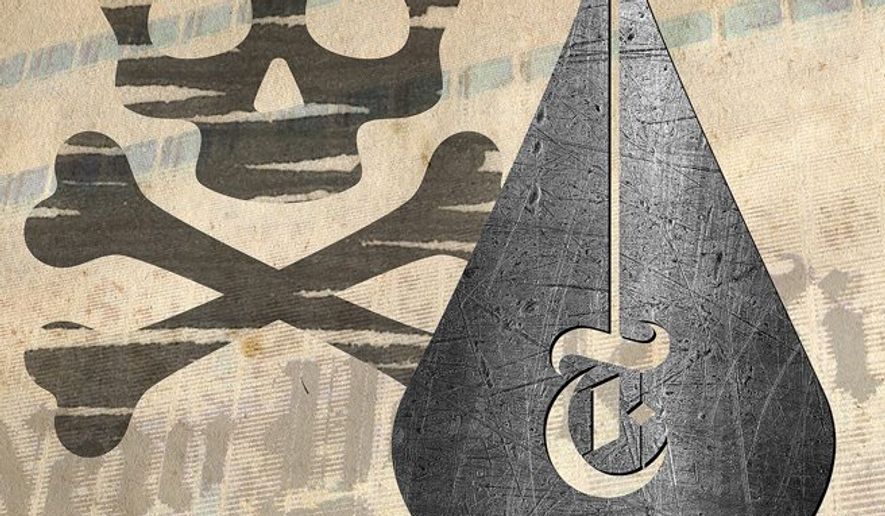OPINION:
The unique role of a free press in an open society requires members of the media to maintain strict impartiality when publishing news stories — their own industry ethics require it. Incredibly, this is the exact source of growing mistrust of the press by the American people in recent years, as the media obstinately refuse to meet their own standards to be impartial.
At Liberty University, our past and recent history of being the target of biased and agenda-driven news stories have given us a unique vantage point to witness the steady disintegration of journalistic integrity in this country.
Our Christian university has long been a subject of partisan attacks from the mainstream news media. The examples are plentiful, from the full-page “ad” by Hustler’s Larry Flynt back in 1983 — which was so disgraceful that our founder, Dr. Jerry Falwell, sued for libel, invasion of privacy and intentional infliction of emotional distress — to MSNBC smearing the school as an illegitimate university because my father was a televangelist (of course, without any mention that most Ivy League schools were founded by preachers and evangelists), to Politico’s shameful and debunked hit piece last year involving personal attacks on my wife and kids.
But as of late, The New York Times’ nefarious campaign to “Expose Christian Schools” has turned into an all-out war against Liberty University over our handling of COVID-19. What started as an obvious example of biased journalism quickly turned into a full-blown campaign of malicious libel that only became more aggressive in the face of contradictory facts and proof of their hypocrisy.
As it stands, not a single student, faculty or staff member on campus at Liberty University has tested positive for the coronavirus, but the mainstream press would have you believe otherwise.
Over the past few weeks, The New York Times, CNN, The Washington Post, Politico and other left-leaning media outlets have subjected Liberty to baseless and relentless attacks that intentionally misled the public about our response to the national COVID-19 crisis, inaccurately reported cases of the virus in our campus community without verification and misrepresented the course of action that Liberty University is taking to prevent the spread of the virus.
Typical of these types of libel campaigns, once The New York Times published its initial story, it was quickly followed by countless other media outlets that repurposed and shared the false claims in a whirlwind of fake news.
But when we corrected the record, even taking out a full-page ad highlighting the hypocrisy of the effort to single out Liberty University, the media doubled down. We noted how Liberty’s course of action was largely in line with the practices of many flagship institutions, including Texas A&M, UCLA, Virginia Tech and Arizona State University. Tellingly, those universities received no negative media coverage. That inconvenient fact was buried 16 paragraphs down in The New York Times’ follow-up hit piece against us.
Instead, The Times considered it more important to boast of its own bravery for sending a photographer to LU’s campus, knowingly violating both our COVID-19 safety measures and clear no-trespassing orders, in addition to putting our campus community at risk. They disregarded our highest priority — the safety of our students, faculty and staff — to make the false claim that we weren’t maintaining the highest standard of safety and care for our community.
This incident is proof why Americans have lost trust in the news media to accurately report on the coronavirus crisis. In fact, recent Gallup polling reveals that the news media are the only one of nine institutions and leaders to earn the disapproval of a majority of Americans.
Perhaps people lost faith in The New York Times when it so obviously prioritized cheap political shots aimed at President Trump over his command of the coronavirus response. The newspaper published a long list of articles attacking the president over his support for hydroxychloroquine trials, with one story even accusing the president of “putting Lupus patients’ lives at risk” by profiling the drug as a potential treatment for COVID-19.
Or maybe the loss of trust came more gradually over the course of time, because The Times has spent years steadily dismantling its once-renowned credibility, story by story, eroding people’s faith in the legacy media giant along with so many other news media outlets.
You don’t have to take my word for it. The New York Times’ former public editor Margaret Sullivan was asked if the publication has a liberal bias during an interview on CNN’s “Reliable Sources,” to which she replied “modified yes with lots of nuances.” Her predecessor, Arthur Brisbane, was less subtle, writing in his last column that a progressive worldview “virtually bleeds through the fabric of the Times.”
The paper’s new 1619 Project states outright that its goal is to “reframe the country’s history,” with Times executive editor Dean Baquet stating that the project’s purpose is “to try to understand the forces that led to the election of Donald Trump.” Then, of course, you have the leaked Times’ internal crisis town hall meeting that literally revealed the publication’s all-in mission to take out Mr. Trump, as supposed journalists openly discussed shifting the newspaper’s emphasis from “collusion” to “race” and “division.” The examples abound.
Unfortunately for America, the media are no longer fulfilling their obligation to maintain strict impartiality as a core tenet of their professional ethics, depriving Americans of real news reporting from a reliable press at a moment when we arguably need it the most. Media outlets in this country must return to the basic principles of fairness and impartiality, or journalism will never regain the trust and confidence of the American people.
• Jerry Falwell Jr. is the president of Liberty University and the co-founder of the Falkirk Center on Faith and Liberty.




Please read our comment policy before commenting.